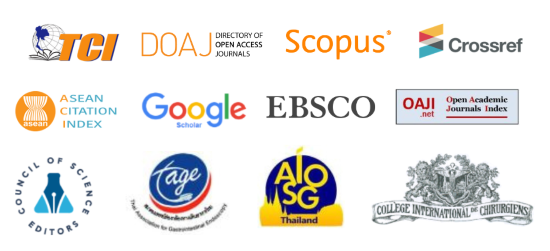Leishmaniasis: An Evolving Public Health Concern in Thailand
Keywords:
Thailand; Southeast Asia; Leishmania; autochthonous leishmaniasis; Leishmania. siamensis; Leishmania martiniquensisAbstract
Leishmaniasis is a parasitic disease caused by flagellated protozoa of the genus Leishmania. It is transmitted by infection from the bite of an infected sandfly. The 3 main clinical forms of the disease are cutaneous leishmaniasis (CL), visceral leishmaniasis (VL) and mucocutaneous leishmaniasis (MCL). Prior to 1996, all leishmaniasis cases were infected during the visit to the endemic areas. Thereafter, autochthonous leishmaniasis cases have been reported in Thailand. During 1996 to the present, at least 21 cases of autochthonous leishmaniasis have been confirmed in Thailand. Leishmania siamensis, a novel species of Leishmania, was suspected of being the causative pathogens in some of those cases, although the data supporting the existence of this new species is limited. Until recently, in-depth investigation using molecular characterization and isoenzyme analysis revealed that a suspected novel species consists of 2 different, but closely related strains: L. siamensis and L. martiniquensis. L. martiniquensis, a rare species firstly discovered on Martinique Island, is the cause of leishmaniasis in the majority of cases. Meanwhile, L. siamensis, a true novel species first and only reported from Thailand, was confirmed as the cause of leishmaniasis in two autochthonous cases. Two clinical forms (CL and VL) have been observed in both L. martiniquensis and L. siamensis infection. DNA of L. martiniquensis was found in black rats, suggesting their role as a natural reservoir. The presence of L. martiniquensis DNA in two sandfly species (Sergentomyia gemmea and Sergentomyia barraudi) that are commonly found in affected areas may also suggest their role as potential vectors. Here, we update the status of leishmaniasis in Thailand and its emergence as a potential public health concern.
Downloads
Published
How to Cite
Issue
Section
License
Users are free to share, copy, and redistribute all articles published in the Siriraj Medical Journal (SMJ) in any medium or format as long as you follow the following terms:
- Attribution — You must give appropriate credit, provide a link to the material, and indicate if changes were made. You may do so in any reasonable manner, but not in any way that suggests the publisher endorses you or your use.
- NonCommercial — You may not use the material for commercial purposes.
- NoDerivatives — If you remix, transform, or build upon the material, you may not distribute the modified material.
- No additional restrictions — You may not apply legal terms or technological measures that legally restrict others from doing anything the license permits.







